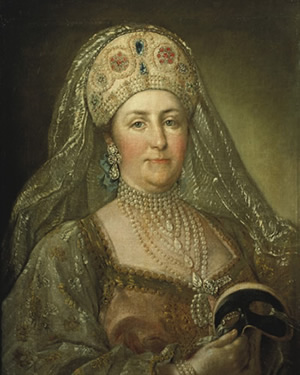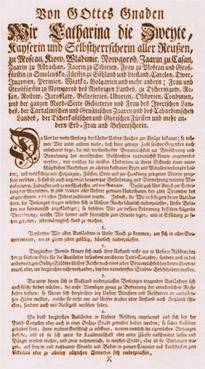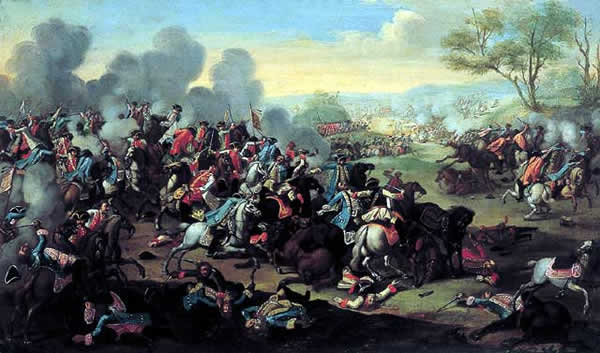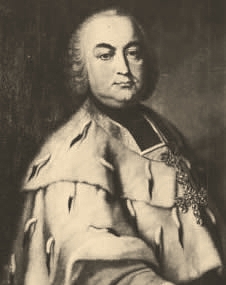![]()
![]()
The settlement policy under Catherine II (1762-1796)
(part 2 of 3)

Catherine II of Russia
Catherine II, in interest of the improvement, began shortly after her accession to throne a largely invested settlement policy of the previously abandoned steppe areas in the lower Volga River and the protection of the southern flank against Asian people.
Catherine's 1st manifesto
In 1762 the Empress Catherine II issued a proclamation inviting foreign settlers (Jews excluded) to colonize the abandoned and depopulated Russian areas. As the proclamation did not contain the conditions of immigration (privileges granted to the settlers) it remained without success.
Catherine's 2st manifesto
So on July 22, 1763 Catherine issued a second proclamation that was aim to all the foreigners: merchants, small bourgeois and farmers (Jews included). The proclamation, this time contained various privileges, was translatede in different languages and published on foreign newspapers. The major answer came from Hesse and from Palatinate.

Catherine's proclamation
The privileges of the second manifesto corresponded to the desires of Germans emigrants: it guaranteed
- the personal freedom for all those that immigrated in Russia
- the freedom to settle in any place of the Russian Empire
- the religious freedom and the right to build own churches
- a local self-government and the right to leave Russia in any moment
- the exemption from the military service (the volunteers would receive 30 roubles)
- the exemption from all the taxes, from all the services and from the obligation to give room and board to the troops in war, for a duration of 30 years, (who settled in cities from 5 to 10 years) after that usual taxes and the services of the place were valid.
- the concession of loans (with the restitution without interest after 10 years) for housingbuilding
- money for the journey from the Russian border up to the settlement place
For the greatest part of the poor farmers the concession of money for the journey was a great temptation. But a particular incentive to the emigration for many was the exemption from the military service, because at that time the German sovereigns didn't ask only the war service and the taxes, but about ten thousand of men and children were sold to foreign powers as England and France. With the emigration many men managed in escaping the brutal methods of recruitment1.
Bans against emigration in German countries
Especially the Germans in the south-west suffered greatly of the Seven Years' War2 (1756-63) and many were ready to emigrate because they wanted or had to start a new life.

Battle of Kolin 1757
The response was so great that some Germans rulers forced to enact bans against the emigration because they feared such an exodus and a consequent depopulation with fees reduction and therefore their income (from 1514 to 1806 the right of free movement in the Holy Roman Empire of the German Nation was only permitted within its borders).
The rulers of Prussia, France, Spain, Saxony, Bavaria, Hesse, Palatinate and Austria intensified their measures against emigration in the years after 1750.
Emigration ban of Archbishop Johan IX

Archbishop Johann IX. of Trier
So Johann IX, the Catholic Archbishop of Trier, on 28.4.1763, decreed an emigration ban sustaining that the departure of the families was due to the instigation of bad people. Those that would move searching their own fortune in the new countries, violating so their subject's obligation had to be punished.

Pillory
So subjects who attempted to emigrate had to expect confiscation of all their possessions and body penalties. Instead the recruiters threatened with the loss of their property and a life expulsion from the archdiocese. But before their expulsion they had to stand publicly in the pillory for several hours with a label around their neck with the inscription: "seducer of subjects." In particularly serious cases the death penalty could be imposed and enforced.
Emigration ban of Platinate
The emigration ban of Palatinate government of the 29th April 1766 differed from other emigration-forbidden because it "warned" the emigrants about dangers and difficulties which they would meet in the foreign land.
The Palatinate had to cope with significant population loss by emigrations since 1709. Up to middle of the 18th century between 12,000 and 15,000 people left their homeland in direction North America. In front of this noticeable loss the Palatinate government had remitted already the first emigration prohibition on the 27th February 1764 which was strictly directed against Russian recruiters. So all recruiters who entered the Palatinate should be arrested and interrogated.
Informers were promised high rewards. So Russian recruiters could recruit successfully only in the West and in South-west of Germans territories where measures against emigration were easier.
Although it was not easy to emigrate from German territories, Catherine II with her edict provoked a mass immigration. In the years from 1763 to 1769 more than 23,000 people emigrated in the Russian Empire mostly from Hesse, Franconia, Bavaria, Wirtemberg and Palatinate.
The Germans frequently were joined from Dutch, Swiss and Italians.
Settlements appeared in the lower Volga River (Volga Germans), near St. Petersburg, Riga, in the Gouvernment Cherson and in Volhynia.
Unfortunately, after the arrival the settlers discovered that not all promises of the edict were kept.
1 Methods of recruitment = Karl Eugen governed the duchy of Wirtemberg from 1737 to 1793. Wirtemberg had even then a states assembly (assembly or a parliament which is divided into classes) which limited the rights of the ruler. Karl Eugen was a splendour lover, wastefull, tyrant and absolute ruler who didn't tolerate other opinions and oppositions (adversaries were thrown into prison). He stood in constant conflict with the assembly.
In 1752 he concluded the first “subsidy contract” with France which gave him financial leeway for some time. For putting on stand-by of a subsidy army in troop-strength of 6,000 men, France paid a subsidy of 130,000 florin for 6 years.
Duke Karl Eugen squandered the French subsidies with his prodigality and he didn't think in the least to equip soldiers for a possible French request.
When then in 1756 the Seven Years' War (also called : the 3rd Silesian-War) broke out and France requested the subsidy army from Wirtemberg, the duke fell in big trouble.
Apart from the requirement of the subsidy army he still had to make available almost 1,500 soldiers for Austrian for the war against Prussia. But there were neither soldiers, nor uniforms, nor weapons, nor ammunition.
In Wirtemberg at that time soldiers could be recruited only in case of defence. So the duke induced the mobilization. However almost nobody responded voluntarily to this call, so he recruited men with force. Began a hunt on a large scale, farmers, artisans and laborers.The man hunt was held three times, on 3rd May, 7th July and 27th October 1757. But they managed to organize an army of only 2,700 men instead of 6,000 required by the subsidy contract concluded with France.
So drunk men were taken up in pubs or village festivals by recruiting officers, and were placed without hesitation in prison and kept there without food until they enlisted "voluntarily".
For deserters there was a head premium of 18 guilders. In part began a proper "hunting fever": bells called on hunt against suspects, ways were blocked, bridges were guarded and haystacks were sticken through with pitchforks.
2 Seven Years' War = The Seven Years' War (also called 3rd Silesian-War); Austrian war against Prussia from 1756 to 1763 to recover Silesia and the hegemony on German soil. Already from 300 years the house of Habsburg was the strongest power in the Holy Roman Empire of German Nation. This war involved most of the European powers, especially Prussia and Great Britain on one side and Austria, Saxony, France, Russia, Sweden and Spain on the other side.
Maria Theresa, empress of Austria and her minister, Count Kaunitz, tried after the 2nd Silesian War to win back Silesia which had conquered from Prussia in 1742 and break the Prussian power seen as a danger in this connection. The tensions that started in Europe tied those between England and France around near Ohio in North America. The war was fought out in Central Europe, North America, India, the Caribbean as well as on the oceans.
The Seven Years' War is considered as the first world-wide war which changed the European balance. At the same moment the dualism was strengthen between Austria and Prussia which should stamp the German history more than hundred years. Although if the war ended undecided, Prussia was now among Great Britain; France, Austria and Russia considered as a European great power.




